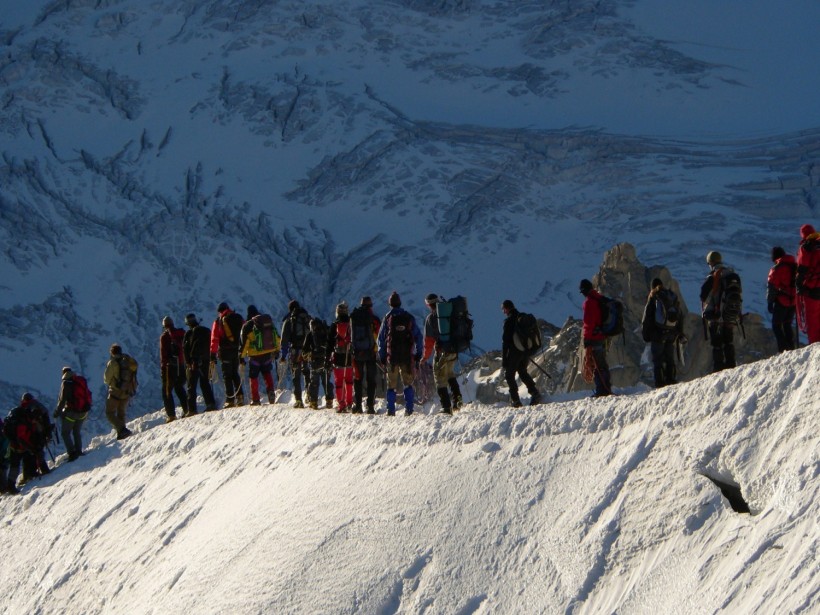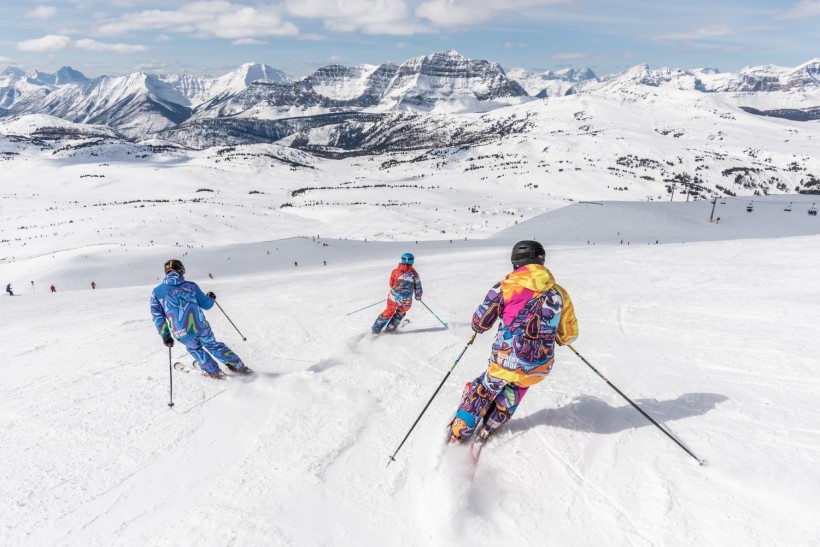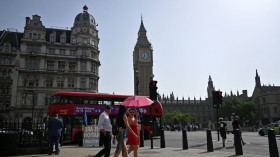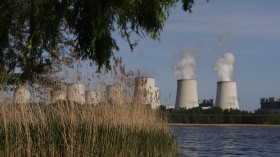Ask anyone who loves skiing if the impact of the sport on the slopes is environmentally-friendly, the answer will be a crisp no! The increasing popularity of skiing and the subsequent expansion of ski resorts has flattened forests, uprooted wildlife and has had a knock-out effect on most resorts which use as much as 80% of artificial snow in order to survive.
The winter of 2020, according to Copernicus Climate Change Service, was 3.4°C warmer than the average of the forty years preceding 2010. At this rate, according to experts, there will be no snow left on the slopes in 100 years. The message is loud and clear, raise the sustainability bar or render the ski industry obsolete. Thankfully, most ski resorts are taking heed, albeit in the nick of time.
Here are some ways by which ski resorts can limit their carbon footprint, but for the ski industry to survive it is imperative that every resort devises its own sustainability program to mitigate the effect of warming winters.
Run ski lifts on renewable energy: Ski lifts are mostly run on electricity, and it is estimated that these fossil hungry hoists consume energy equivalent to supplying power to 3.8 households. Using energy from renewable sources is therefore a sustainable way to power them. Companies like Alpine Elements promote sustainable ski chalets and ensure eco friendly practises are followed.
Switch to efficient snow pump technology: Less snow is pushing many resorts across the planet to create artificial snow, which is considered to be a carbon intensive activity, which actually contributes to warmer winters and even lesser natural snow. Since these snow making machines run on diesel or electricity, they release carbon dioxide as a by-product.
Moreover, the water used in making artificial snow is drained from the rivers and reservoirs in the surrounding mountainside by the resort owners, rather than from their own sources, like for example the Snowbowl resort in Arizona which uses treated wastewater to create the resort's requirement of artificial snow.
Whether the resort has a traffic reduction policy?: This is a cause of great concern, especially across the Alps and that needs to be addressed by many of the resorts. Resorts like Meribel, La Plagne and Chamonix provide free shuttle services between the various ski areas, while some like Morzine are car-free zones.
Implement the green building policy; While some resorts have work to do, thankfully many others are well ahead in the game. There are several purpose - built resorts , for example Meribel and Avoriaz, that have implemented strict architectural guidelines in their construction from day one. The dimensions of the buildings and the materials used comply with the local environment rules and blend with the scenery.
On your part, if you have a choice, consider choosing the right company and tour operator that adhere to the AITO recognised environmental policy. Their guidelines are:
-
To protect the environment and the flora and fauna within it
-
To respect local culture, traditions and heritage
-
To support local communities,both socially and economically
-
To conserve natural resources
-
To minimise pollution by reducing noise, proper waste disposal and avoid congestion
Sustainable ski destinations
Seeking out a sustainable ski resort is one thing, but finding one as per your liking is another. Here are some good ski destinations which follow eco-friendly practices, support local communities, adopt all-season strategies for saving energy and waste practices.
La Plagne: Being one of the easiest destinations to access by high speed electric train, has given La Plagne an inbuilt advantage for those seeking eco-conscious skiing holidays. Apart from that, most of the property owners in La Plagne have adopted 100% renewable energy sources for power lifts to ensure that their resorts least impact the environment.There are exclusive properties, which are not only environment friendly but have ski-from-door facilities for skiers in La Plagne. Chalet Panoramique and Chalet Charmant are two such excellent properties situated in the heart of La Plagne.
Val D'Isere

In 2003 Val D'Isere obtained the first ISO certificate of recognition followed by the ISO 14001 a few years later to prove they are adhering to the strict requirements. Val D'Isere further obtained the Green Globe Certification through nature conservation, controlled energy management and employee safety. Additionally, during the summer season, the resort hosts educational walks on environmental themes and by the end of 2022, 100 pylons would have been uprooted from the Val D'Isere ski area.
Tignes
With nine months of powder, Tignes has one of the longest skiing seasons in France. The STGM lift company which runs and operates the lifts in the ski area have obtained certification from the international Green Globe for its actions and commitment towards social, cultural, economic and environmental responsibility. The resort now offers skiers the opportunity to ski on 74 runs, 42 weeks in a year, and has earned worldwide recognition for its strict International standards that promote sustainable tourism.
Meribel
It is an undisputed fact that glaciers around the world, especially on which most ski resorts are sitting, are receding due to climate change. Luckily, Meribel is considered to be one of the greenest resorts in the Three Valleys area, apart from maybe Courchevel, that has more green runs. Meribel sources the energy to run their lifts and snow cannons from renewable sources by using hydroelectric power from the nearby Ariondaz dam. Solar energy is used for radio communication that is used to maintain the slopes. The free bus service, despite the cost of a million euros per season, ensures that emissions from private cars are kept at bay.The greatest joy of Meribel is the architecture, with no hideous high rises as found in other resorts because of the strict 80 year building code which is implemented in the town. Accommodation in the form of well-catered and sustainable chalets is available at Chalet Meilleur and Chalet Cretet.
Chamonix

Chamonix was one of the first ski resort in France which developed its own climate and energy conservation plan, way back in 2010, with the sole aim to reduce carbon imprints by as much as 20% in the next ten years.That they succeeded in this ambitious program was entirely due to establishing an extensive public transport system, investing in electric mobility and using renewable energy to heat the buildings. In fact, Chamonix at one time was only one of the three resorts awarded the "Green Snowflake" certificate known as Flocon Vert, devised by the French sustainable winter program campaigners, Mountain Riders.
Eco-tourism is gaining traction with climate change in front of our collective minds. Planet-friendly methods of travel and other factors to combat environmental preservation will ensure that you will enjoy a ski holiday, safe in the knowledge that you have done your bit to offset any damage to the environment.
© 2024 NatureWorldNews.com All rights reserved. Do not reproduce without permission.
* This is a contributed article and this content does not necessarily represent the views of natureworldnews.com






